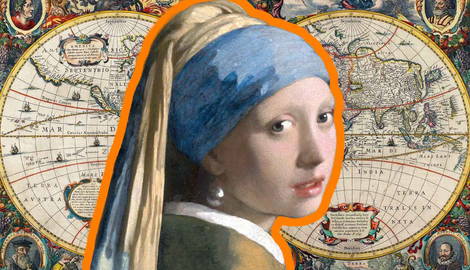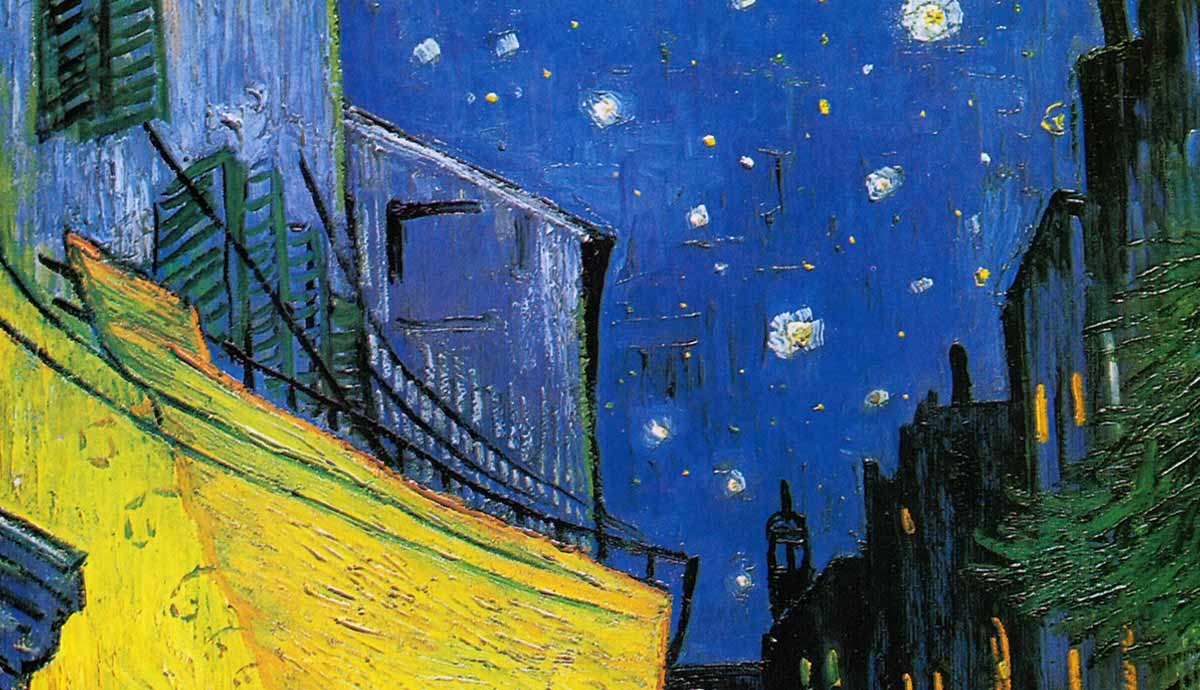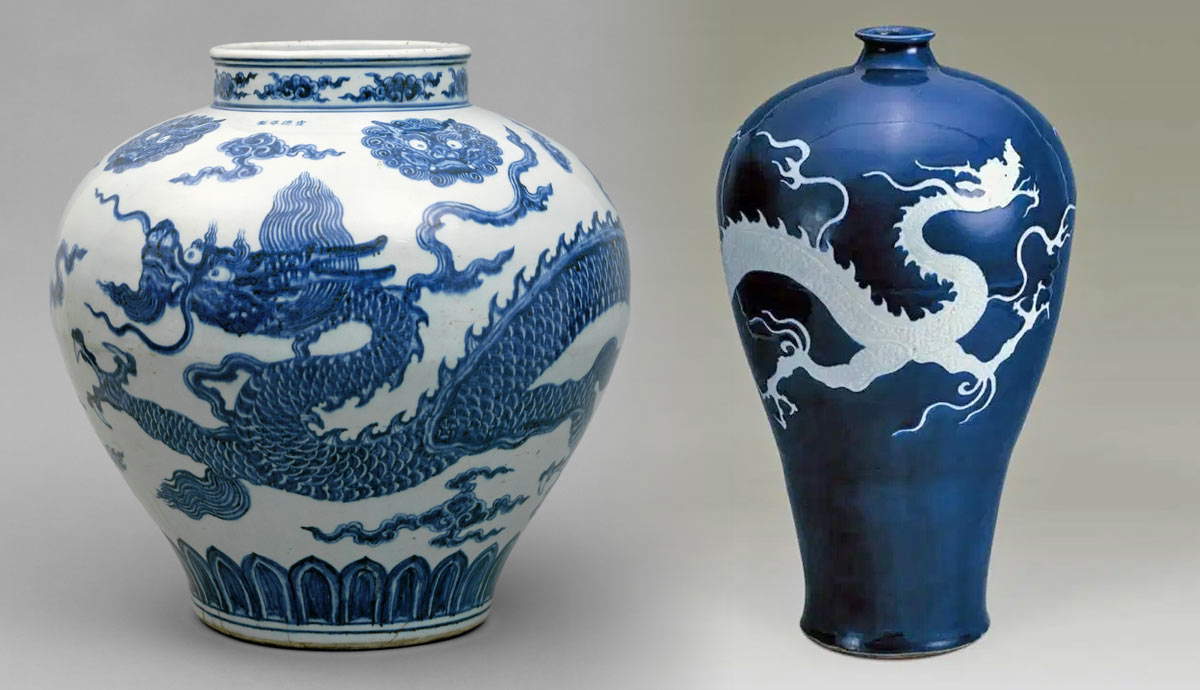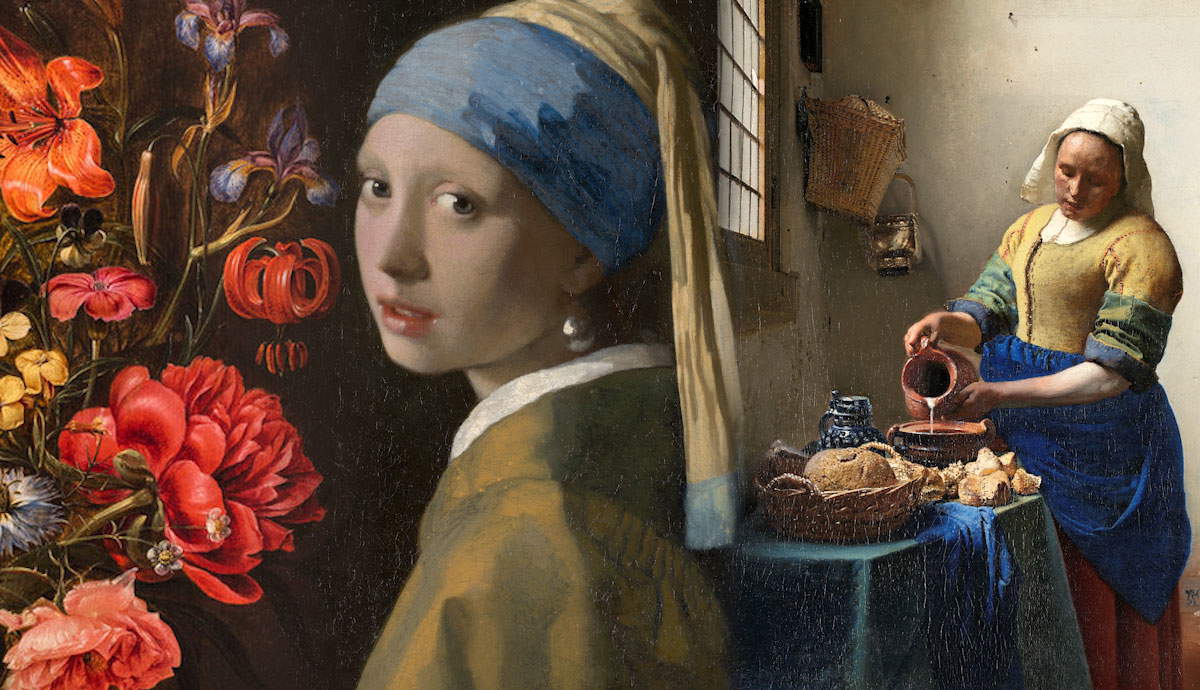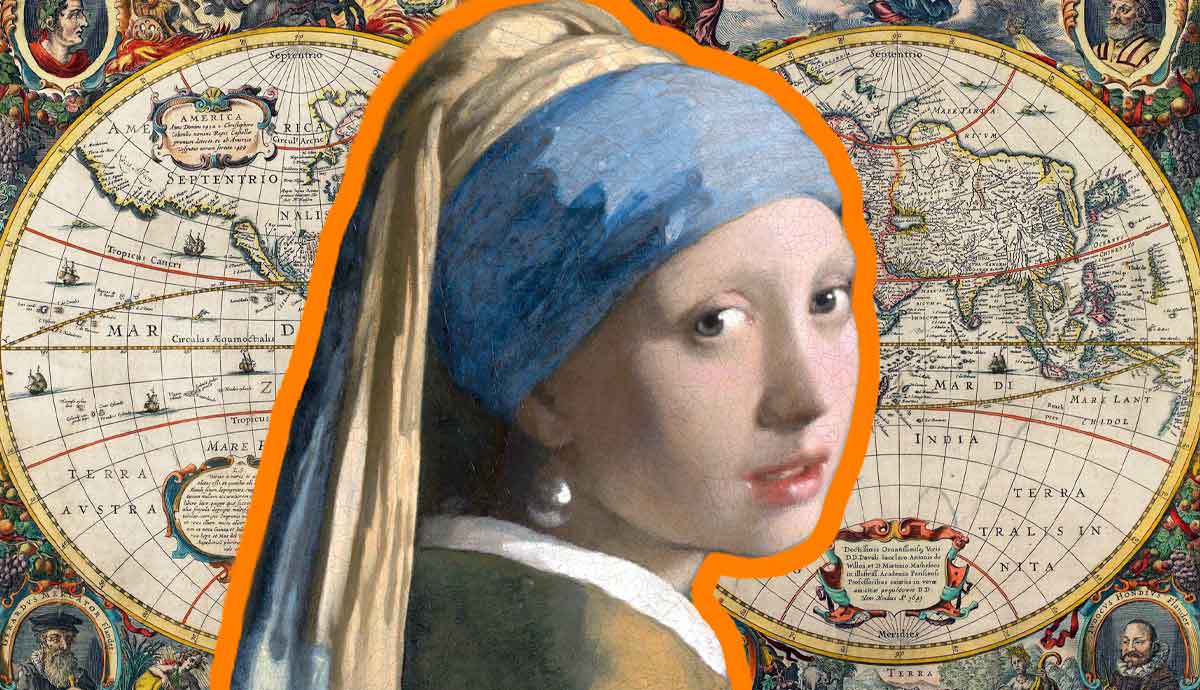
Only around 35 paintings by Johannes Vermeer survive today, but they still captivate viewers of all ages and backgrounds. This is evident from the ocean of merchandise featuring his masterpieces and the fame of the Girl with a Pearl Earring, which appears in pop culture almost as often as Mona Lisa and inspired a novel by Tracy Chevalier. Vermeer’s paintings focus on domestic everyday life yet they also reflect the wealth and expanding horizons of the Dutch Golden Age. But how did geographical discoveries shape Vermeer’s art?
Johannes Vermeer

Johannes Vermeer was born in Delft, which was a thriving and important town in the 17th century. The Dutch East India Company had an office there, and it was famous for its pottery. One of the themes favored by the Dutch Golden Age painters, in addition to landscapes, portraits, and historical paintings, was prosperous domesticity and the virtues associated with it in Protestant Dutch culture. There’s something calming and quiet about Vermeer’s paintings.
Yet Johannes Vermeer was born during a time when new lands were being discovered regularly, and sailors returned with accounts of mind-boggling new cultures and ways of life. Just ten years after Vermeer’s birth in 1632, Abel Tasman, a Dutch explorer, became the first European to see the islands of Tasmania and New Zealand. The Dutch Golden Age overlapped with the final phase of the Age of Exploration, which saw the formation of the highly influential Dutch East India Company (founded in 1600) and the establishment of new trade routes and colonies. The colonial conquests did a lot of damage and, at the same time, carried a steady flow of wealth and luxury products into European ports.
The Dutch Golden Age brought an uninterrupted period of peace to the Netherlands, accompanied by increasing economic prosperity and a revival of the arts. It was especially important for painting, and some of the most celebrated Dutch painters lived during this time. Vermeer didn’t paint merchant ships or bustling city views, except for two small cityscapes. Yet the thriving culture of the Dutch Golden Age left a tangible mark on his contemplative and peaceful paintings.
Light, Optics, and Perspective in Johannes Vermeer’s Art

Have you ever considered what quality Johannes Vermeer is most famous for? If you had to pick just one thing, it would probably be his luminous rendering of light. The most commonplace themes were made memorable when painted by Vermeer because of that illusive, golden light. But how did he develop the technique that allowed him to capture such light?
Many artists of the Dutch Golden Age displayed a lively interest in optics; some were known to have experimented with inventions like the camera obscura, an optical device that projected an upside-down image of a scene onto the inside of a dark box. It could be viewed and copied, although such an image didn’t show true-to-life colors and, in some cases, somewhat distorted the proportions. A slight disproportion between the foreground and the middle ground is sometimes cited as evidence of Vermeer’s use of optical devices, likely a camera obscura. This effect is best seen in his painting Officer and a Laughing Girl. However, it’s not likely that Vermeer used the camera obscura in more than the compositional sketches.

During the Dutch Golden Age, glass windows turned from a luxury into an everyday object. No more were they used only for the windows of noblemen’s homes. Glass panes were being used in the homes of well-to-do citizens, tradesmen, and craftsmen, as well. Combined with a newfound interest in optics, the transparency of the new material made painters eager to capture the reflections and translucence of the glass windows, which filled the indoor spaces with light like never before.
Vermeer’s Girl Reading a Letter by an Open Window is a great example of this phenomenon. The red window drape can be seen through the clear glass, highlighting its transparency. At the same time, the artist showcases the glass’s reflective properties by capturing the girl’s reflection in the glass pane next to her.

Other illusionistic effects in this painting include the highly realistic shadows and highlights on the silky materials of the girl’s dress and the green curtain. Placing a table covered with a textured rug in front of the reading woman creates perspective within the small room. At the same time, the green curtain in the foreground hides an almost trompe l’oeil effect that was discovered after the painting’s restoration in 2021. The artist painted a silver goblet on the wooden ledge before the curtain, creating the illusion that the green curtain is hanging in front of the canvas and can be drawn to reveal the entire painting.
Depicting Maps and Scientific Instruments

The fact that maps appear frequently in Vermeer’s work can be attributed to the overall interest in geography and the boom in cartography during the Dutch Golden Age. No longer a luxury item, although reliable maps were still fairly expensive, maps could be bought and displayed in middle-class homes. They were seen as symbols of refinement and learning, and highlighted the respectability and culture of the owner.
In Vermeer’s Officer and a Laughing Girl, the map behind the two figures shows the Dutch lands of Holland and Frisia, as shown in an etching by Willem Blaeu, a famous Dutch cartographer. The same map (but in a larger size) appears in Woman in Blue Reading a Letter. In this painting, as the woman is shown absorbed in reading a letter, the map could be a symbolic allusion to a loved one who is far off.
There’s another map in the background in Vermeer’s Young Woman with a Water Pitcher, as well as in several other of the artist’s paintings. A large map forms the background in The Art of Painting. In Woman with a Lute, the map is recognizable as the map of Europe by cartographer Jodocus Hondius.
“The Geographer” and “The Astronomer”

Two paintings, The Geographer and The Astronomer, are particularly associated with the interest that Vermeer’s contemporaries had in geographical discoveries and the budding sciences. In both, Vermeer depicts a scholar in his study, surrounded by the instruments of his profession. Vermeer depicted The Astronomer as a seated man surrounded by books, an astrolabe, a compass, and even a celestial globe that can be identified as the work of Hondius. The Geographer was likely a pendant to The Astronomer and shows a similar protagonist. The young man is dressed in a banyan, a home robe, and is leaning over a table covered with maps and books. There’s a globe and more books on the cupboard behind him, and he’s holding a cartographer’s compass in his hand.

Some scholars believe that the scientists in both paintings depict a real person, Antonie van Leeuwenhoek. Sometimes called the Father of Microbiology, he was a significant Dutch scientist who lived in Delft at the same time as Vermeer and was known for his research in microbiology and astronomy. The paintings may have been commissioned by Antonie van Leeuwenhoek. However, there’s no documented historical evidence to link this famous scientist with the paintings.
Exotic Objects in Johannes Vermeer’s Art

Another noticeable consequence of Holland’s geographical expansion and flourishing trade is the abundance of exotic, imported objects in Vermeer’s paintings. Rising wealth and demand meant that merchants imported numerous luxury wares from all over the world, and some of them appear in Vermeer’s paintings.
Oriental rugs were one such imported commodity, and they appear frequently in Vermeer’s paintings. Instead of placing them on the floor, oriental carpets were used to cover tables, drawing the attention of guests to this exotic luxury item. In Woman Reading a Letter by an Open Window, for instance, a thick carpet is placed in the foreground, and its rich, soft texture is portrayed alongside peaches and other fruits, creating an opulent still life. The same use of expensive rugs from the East appears in Vermeer’s The Concert, Young Woman with a Water Pitcher, The Music Lesson, and A Maid Asleep.
As Dutch merchants brought home exotic wares and fascinating tales of far-off coasts, the East was associated with extravagant luxury and lavishness. Strange headdresses and imaginative costumes appear in numerous Dutch paintings, classified under the genre of tronie, which typically depicted figures in historical, Oriental, or fantastical costumes.

Vermeer painted several tronies, including the Girl with a Pearl Earring. When Johannes Vermeer created his most famous painting, he gave his model an unusual headdress that was not worn by women in Holland and was recognizable as an oriental turban, even if it was more of a fantasy headdress than a real study in eastern costume, showing an early example of what would later develop into Orientalism in European art. The jewel-like tones of her clothing and huge, shimmering pearl in her ear give the Girl with a Pearl Earring an ethereal glow, yet it’s not a portrait but more of an idealized image.
Other exotic, imported objects in Vermeer’s art include the frequently portrayed pearls (in necklaces and earrings), which were brought from the East, beaver hats made from pelts brought from North America that led to the Great Beaver Wars, as well as the Chinese vase on the table in his Woman with a Pearl Necklace.
From the luxurious colors and textures to the geographical maps on the walls in his paintings, Vermeer’s paintings reflect a world that had suddenly become larger due to the momentous geographical, scientific, and cultural discoveries of his contemporaries. It’s not an exaggeration to say that Johannes Vermeer’s art would have looked very different if he hadn’t lived during the era of the great geographical discoveries and flourishing of the arts that gave the Dutch Golden Age its name.
